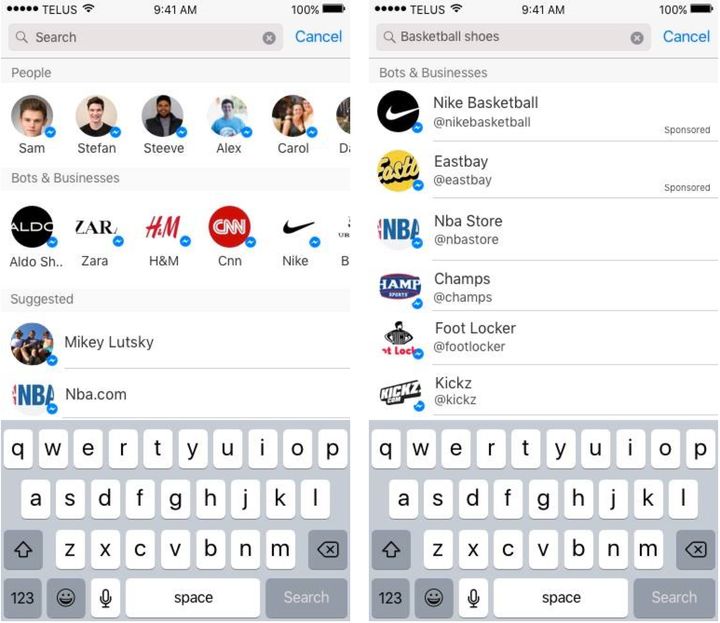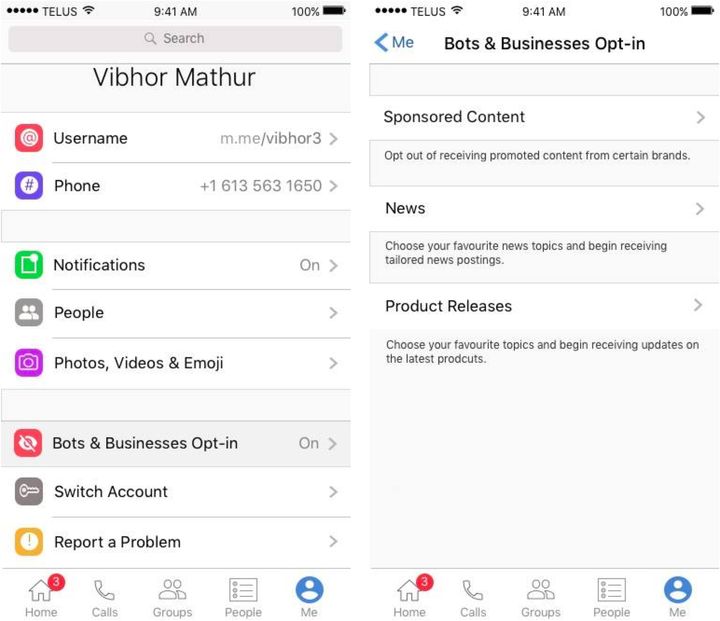
Originally published to Medium.com on September 21, 2016
When we saw Facebook launch their ad bot product on Messenger last month, it became strikingly clear that we had just entered a new phase of online advertising. The internet is fueled by ad spend and now that bots can join the party, they’ll be taken even more seriously by both messaging platforms and brands. Liam and I are on a mission to educate companies on the significance of messenger bots when it comes to customer engagement and to forecast how future engagement will look like with this technology.
What Makes Bots Cool
You may be wondering, why are chatbots and their ads important? Two reasons: 1) they deliver content through increasingly popular messaging platforms that ooze personalization & trust, and 2) the technology underlying bots will improve to the point where it’s indistinguishable from human conversation.
Bots are deployed in a person’s messenger inbox. These inboxes are where people spend the majority of their time online and are where they converse with family/friends on a variety of topics. It’s all one-on-one conversations that we have complete control over; the messenger inbox (not email) is an incredibly trustworthy, personal, and familiar place. In fact, messenger platforms have become so popular that Mark Zuckerberg once said, “messaging is one of the few things that people do more than social networking.” This should come as a major wake up call to brands. If the King of social networking publicly states that user attention is greater in messaging than in actual social networking, it’s time to begin shifting your focus towards delivering valuable content over messenger rather than your brand’s Facebook page.
Moreover, bots may appear toyish right now, but that’s how all good technology first started (anyone remember how social media itself was first looked upon?). What’s important is that bots are undergoing a long process that will see a shift from static to interactive conversations (e.g., evolving to NLP that is more complex and context driven). When this happens, we’ll see bots that can converse with humans based on the subtleties of their text/speech — enabling the delivery of extremely precise offerings. Although, this is not to say that messenger bots in their current design are useless. A quick look at Tencent’s WeChat app and we can see the enormous e-commerce and quick discovery capabilities of bots in their current form.
Rundown of Ad Bots
Ok, so conversational bots seem important, but what are ad bots (specifically on Facebook)? These are ads that are sent by a brand to a user of Messenger, after that user engaged in a conversation with the brand’s chatbot (click here to see platform policies). This is significant considering that the internet isn’t currently offering many stellar ways to buy advertisements; CTRs of banner ads have dropped to ~0.15% and programmatic native/pop-up ads create terrible rapport. The smartest brands of the past five years have been buying into social media advertising for its ability to capture consumers’ attention. Considering the fact that attention is clustered in messaging and that ad spend should be directed at wherever consumer attention is the greatest, it becomes obvious that the smart brands of the future will invest heavily in advertising on messaging platforms.
As mentioned above, ads via a bot can only be deployed after a chatbot conversation is initiated by a human. With that said, in order to push more ads via a bot, the question that brands have to ask themselves is, how can we get more people to initiate conversations with us? Aside from providing value as a company where users organically think to talk to you, a quick Google search brings to light a few tactics that brands can use to get conversations started: buy online ads that direct to your messenger bot, create a utility (e.g., mortgage calculator for a bank) for customers to use as a tool, place embedded links on your website/newsletter/checkout page that direct to your messenger bot, and curate extremely personalized content to drive repeat use.
How the Future Bot Interface May Look
But we’re not here to reiterate what’s already online. We want to propose a tool that could be used as the next method of discovery: the search bar in messaging apps. Using Facebook as an example, users who currently click the search bar in Messenger are returned with a list of their most important friends. We believe that this list will evolve to include brands’ bots. This would resemble something similar to Google search where brands can increase their exposure by participating in sponsored search auctions, and by increasing their search result ranking through their own SEO tactics. In addition, Facebook could provide a user with a list of their top brands based on their past conversations and general interests as indicated on Facebook (similar to what they do currently with your favourite friends). Lastly, Facebook could leverage their own database to pair us with the bots that our closest friends are interacting with. The development of a sophisticated search bar would initiate millions of conversations that previously wouldn’t have happened if users weren’t, so to speak, “led to the well.”

Upon clicking the search bar, users are returned with a list of both their favourite friends and bots. Upon using search bar, users are returned with their search results with clearly marked sponsored search results.

On “Me” tab in Messenger, Facebook provides users with the ability to opt-in/out of certain bot-related material. This includes sponsored search results (when the arrow next to “Sponsored Content” is clicked a list of brands that they recently interacted with appears, all with the ability to opt-in/out of that brand’s sponsored material), opt-in/out of receiving notifications on certain news topics (when the arrow is clicked, news topics appear), and opt-in/out of receiving product release information on subjects of interest (when the arrow is clicked, product categories are shown). Brands at one point may be able to pay Facebook to become the preferred choice to deliver news and product release content.
Bots — Changing the Game
In theory, if this was executed flawlessly, we would see a slight drop in the relevance of websites and traditional online search, and an increase in search through new verticals like Messenger. Why go through the entire process of navigating a website — and using a search engine to find it — when you can easily ask a bot any question and build on that response, all in real-time. We think it’s quite audacious to state that messenger bots like Facebook’s will serve as a substitute to discovery on search engines like Google’s, but this potential shift in consumer preference will be an interesting concept to pay attention to over time.
If these messenger bots can deliver information in a more personal way (a 1:1 conversation), on a more personal platform (where you talk to all of your friends), with more personalized ads (from brands that you’ve engaged with), and all delivered in a simpler way (no more search result/website navigation), Facebook, and messaging apps like it, can easily become the platform where we learn, receive notifications on, and purchase new things. When this becomes a reality, it’s the brands that were early users of bot technology that’ll know how to use it best — a good reward for rejecting complacency in marketing efforts.
Have any thoughts? Comments? Tweet me @_vibhormathur!
